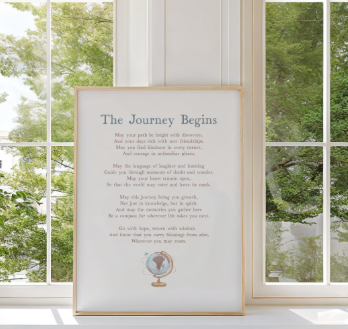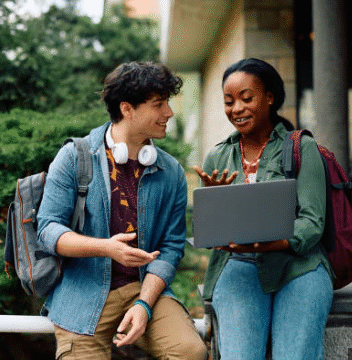For international students who have just arrived in the United States, figuring out how to get around a big city can feel like a new adventure. American cities are designed with various transportation systems, and using public transport can be one of the best ways to save money, explore neighborhoods, and experience local life. Learning how to navigate buses, trains, and other services with ease can make your stay much smoother and more enjoyable.
Public transportation in the United States varies from city to city. While some large metropolitan areas like New York City, Chicago, Boston, and San Francisco have well-developed networks, smaller cities might rely more on buses or regional trains. It helps to understand how your city’s system works before your first ride. Spend a little time exploring official city websites or transportation apps. They usually offer route maps, schedules, and even fare calculators to help you plan your trips efficiently.
One of the first steps to becoming comfortable with public transport is to get a travel card or pass. Many cities have reloadable transit cards that allow unlimited rides for a fixed period, which is often cheaper than buying single tickets every day. For example, New York City has the MetroCard, while Los Angeles uses the TAP card. These cards can often be linked to mobile payment apps, making reloading and managing your balance much easier. Some university campuses also partner with local transit agencies to offer student discounts or free passes, so always ask your international student office if such programs are available.
Learning how to read a transit map might feel confusing at first, but practice makes it easier. Pay attention to color-coded routes, line numbers, and station names. Apps like Google Maps, Transit, or Citymapper can simplify this process by showing real-time directions and estimated arrival times. Many American buses and trains now have live tracking, so you can see when your next ride will arrive. This helps you avoid unnecessary waiting and plan your schedule more accurately, especially during busy school days.
Being aware of rush hours can also make your daily travel more pleasant. Most cities experience heavy traffic during early morning and late afternoon when people commute to and from work. If your schedule allows, try traveling slightly earlier or later to enjoy a less crowded ride. On trains or buses, be courteous by keeping your backpack or belongings off the seat and allowing others to sit. Americans appreciate small gestures of respect, and such habits can make you feel more connected to the local culture.
Safety is another important aspect to keep in mind when using public transportation. Always be aware of your surroundings, especially when traveling late at night. Choose well-lit stops or stations, and try to wait in areas with other passengers. Keep your phone, wallet, and personal belongings close to you, and avoid displaying expensive items like laptops or jewelry in public. If you ever feel uncomfortable, move closer to the driver or other passengers. Most transport systems have emergency call buttons or numbers you can use in case of an incident.
Cleanliness and respect for shared space are also key to a positive travel experience. Many cities encourage passengers not to eat or drink while on the bus or train to keep vehicles clean. Listening to music through headphones at a moderate volume and speaking softly on the phone helps maintain a calm environment for everyone. These small acts of consideration can make public transport more enjoyable, both for you and for others around you.
Punctuality matters when using public transportation. Buses and trains generally follow fixed schedules, and while minor delays can occur, it’s wise to arrive at your stop a few minutes early. This habit ensures you won’t miss your ride, especially if you have a class or appointment to attend. On longer routes, you may also want to note transfer points in advance so that you know exactly where to switch lines or buses. Practicing this awareness helps you build confidence and independence in navigating the city.
Exploring your city through public transportation can actually be a fun experience. It allows you to see different neighborhoods, local shops, and cultural areas that you might not visit otherwise. Some students even use weekends to take scenic routes or visit landmarks accessible by train or bus. This is a great way to relax, learn more about American lifestyles, and practice English through casual interactions with fellow passengers.
Many transport systems now offer digital passes, trip planners, and fare payment through smartphones. Learning how to use these tools will make your commute faster and simpler. Some apps also notify you about service interruptions, maintenance work, or changes in routes, which can save you from unexpected delays. Keeping your phone charged before heading out is a smart habit, as you might need GPS or online payment while traveling.
For environmentally conscious students, public transport offers another major benefit—it reduces your carbon footprint. Choosing buses, subways, or trains over personal cars contributes to less pollution and helps cities maintain cleaner air. Many American cities encourage sustainable commuting and even reward students or residents who use eco-friendly transport options. By using public transportation, you are not only saving money but also supporting a greener lifestyle.
At times, you may need to combine different transport methods. For example, you might take a bus to a nearby station and then transfer to a subway. Learning how to plan multi-leg trips will help you travel across the city more efficiently. Don’t hesitate to ask bus drivers or station attendants for help if you are unsure where to go—they are usually friendly and used to assisting new passengers. Over time, these small experiences will help you feel more like a local.
Public transportation also plays a role in building independence. Many international students find that relying on buses and trains teaches them to manage time better and navigate new environments confidently. Each successful trip adds to your sense of belonging and familiarity with your city. You’ll gradually notice that what once felt complicated becomes part of your normal daily routine.
If you ever find the system confusing or face difficulties with routes, it’s completely fine to ask for help. Americans generally appreciate polite questions, and other commuters often lend a hand when they see someone looking for directions. You can also join online student groups or forums where people share travel tips for your specific city. Reading others’ experiences can help you avoid common mistakes and discover helpful shortcuts.
In the end, using public transportation as an international student in the United States is not just about getting from one place to another. It’s about adapting to a new environment, learning to manage your time, and understanding the rhythm of local life. With patience, curiosity, and a bit of preparation, public transport can become an easy and reliable part of your everyday routine. It gives you freedom, helps you connect with your surroundings, and lets you experience the city like a true resident.
Whether you are heading to class, meeting friends, or exploring new neighborhoods, public transportation offers a convenient, affordable, and environmentally friendly way to move around. With these everyday tips, you can make your travel experiences smooth, safe, and enjoyable while making the most of your time studying in America.






